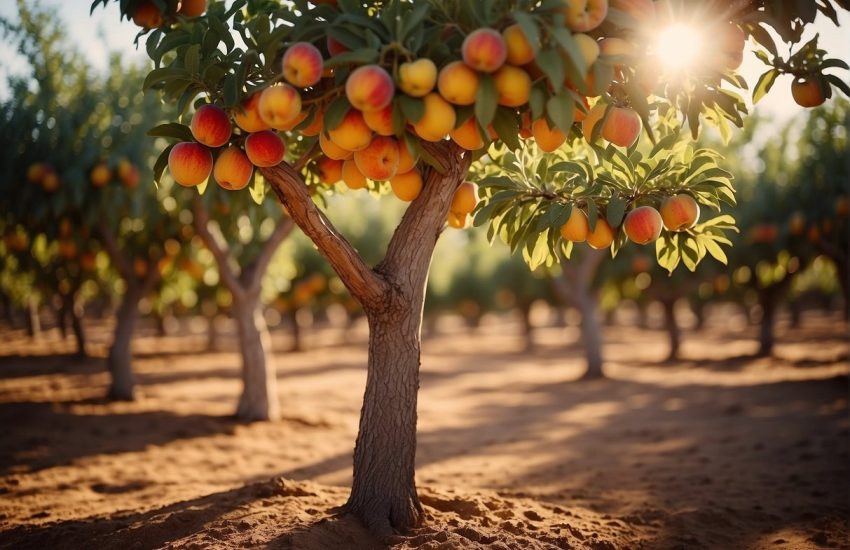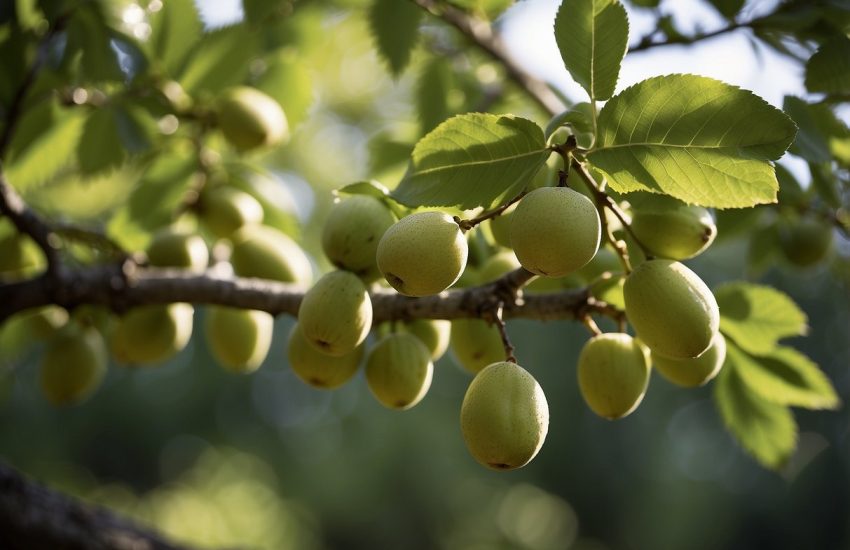What Fruit Trees Grow in Wyoming: A Guide to the Best Varieties for the State
Wyoming is known for its harsh winters and relatively short growing season, which can make it challenging to grow fruit trees. However, with the right knowledge and preparation, it is possible to cultivate a variety of fruit trees in the state. In this article, we will explore the types of fruit trees that can thrive in Wyoming’s unique climate and provide tips for successfully growing them.
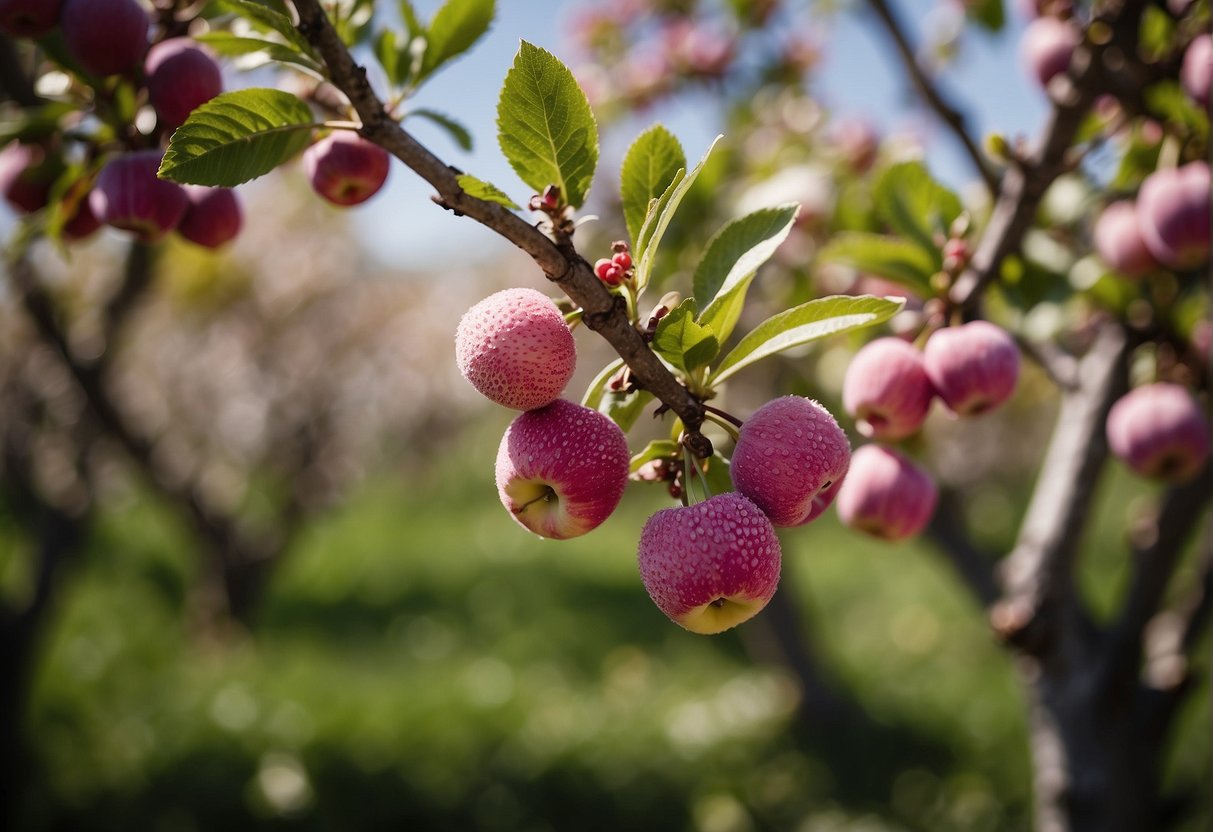
One of the key factors to consider when choosing fruit trees to grow in Wyoming is their cold hardiness. Temperatures in the state can drop well below freezing, so it is important to select trees that can withstand these conditions. Additionally, the growing season in Wyoming is relatively short, so trees that can mature quickly are ideal.
Despite these challenges, there are several fruit trees that can do well in Wyoming. Some of the most popular options include apple, cherry, plum, and pear trees. Each of these trees has unique characteristics that make them well-suited to Wyoming’s climate. By selecting the right varieties and following proper growing techniques, it is possible to enjoy a bountiful harvest of fresh fruit from your own backyard.
Climate and Soil Requirements for Fruit Trees in Wyoming
Understanding Wyoming’s Climate
Wyoming’s climate is characterized by cold winters and hot summers, with low humidity and high winds. The state has a semi-arid to arid climate, which means that it receives little rainfall throughout the year. The average annual precipitation in Wyoming ranges from 6 to 16 inches, depending on the location.
The temperature in Wyoming varies greatly depending on the season and location. In general, the state experiences cold winters with temperatures dropping below freezing, and warm summers with temperatures reaching up to the 90s. The hardiness zone in Wyoming ranges from 3a to 5b, which means that the state has a short growing season.
Soil Conditions and Preparation
The soil in Wyoming is generally well-drained, with low pH and low organic matter. To prepare the soil for fruit trees, it is important to add compost or other organic matter to improve soil fertility and structure. The ideal pH range for fruit trees is between 6.0 and 7.0.
Before planting fruit trees, it is important to consider the hardiness zone and select trees that are cold-hardy and suitable for the climate. Some fruit trees that can grow in Wyoming include apple, pear, cherry, and plum trees.
In summary, fruit trees can grow in Wyoming, but it is important to select cold-hardy trees that can withstand the state’s harsh climate. Additionally, preparing the soil with compost or other organic matter can improve soil fertility and structure, which can help fruit trees thrive.
Best Fruit Trees to Grow in Wyoming
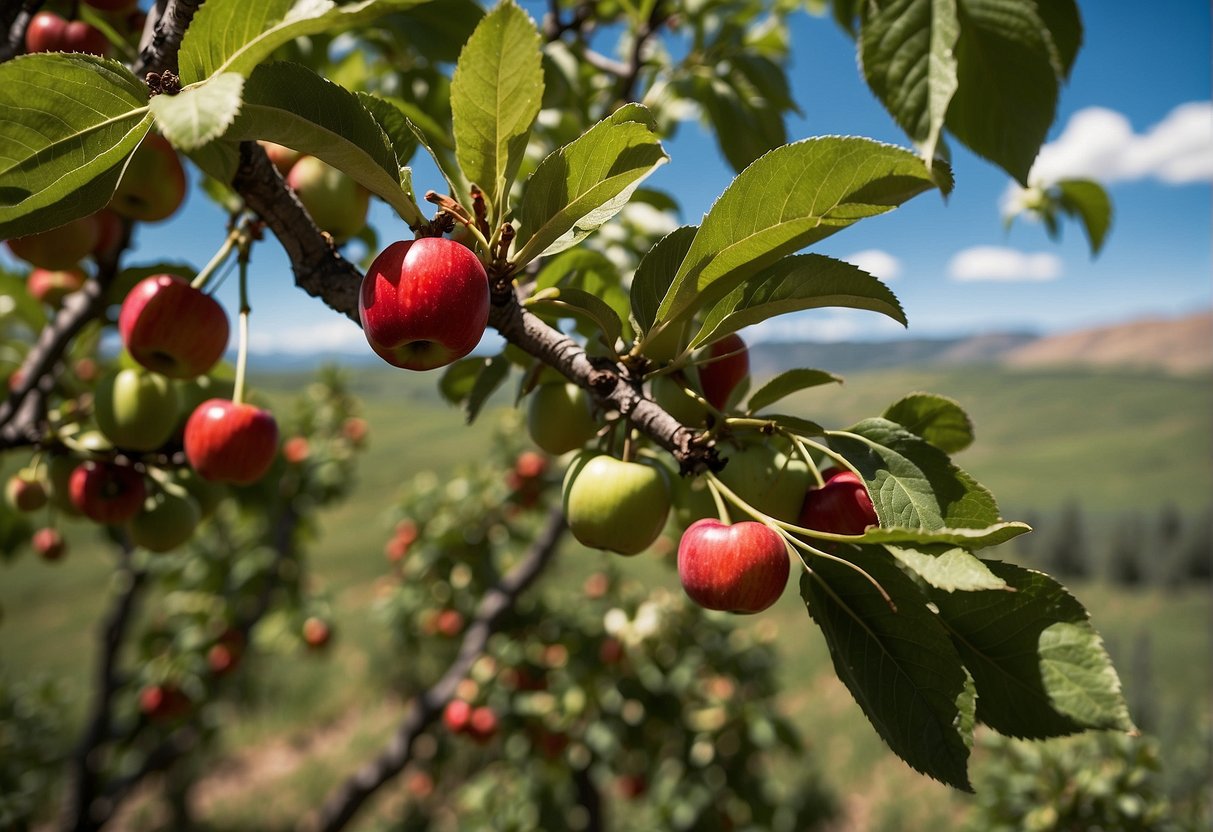
When it comes to growing fruit trees in Wyoming, it can be a bit challenging due to the state’s harsh climate. However, with the right selection of fruit trees, it is possible to grow a variety of fruits successfully. Here are some of the best fruit trees to grow in Wyoming.
Apple Varieties Suited for Wyoming
Apples are one of the most popular fruits grown in Wyoming, and for good reason. They are hardy, and there are many varieties that are well-suited to Wyoming’s climate. Some of the best apple varieties to grow in Wyoming include:
- Honeycrisp: This variety is known for its crisp texture and sweet flavor. It is also cold-hardy, making it an excellent choice for Wyoming.
- Haralson: This variety is another cold-hardy apple that is known for its tart flavor. It is a good choice for baking and cooking.
- Wealthy: This variety is an old-fashioned apple that is well-suited to Wyoming’s climate. It has a tart flavor and is good for eating and cooking.
Stone Fruits and Other Hardy Trees
In addition to apples, there are other fruit trees that can thrive in Wyoming’s climate. Stone fruits, such as cherries, peaches, and plums, can also be grown successfully. Here are some of the best stone fruits and other hardy trees to grow in Wyoming:
- Montmorency Cherry: This variety is a sour cherry that is well-suited to Wyoming’s climate. It is a good choice for making pies and preserves.
- Stanley Plum: This variety is a European plum that is known for its sweet flavor. It is also cold-hardy and can be grown successfully in Wyoming.
- Apricot: There are several cold-hardy varieties of apricots that can be grown in Wyoming, including the Moorpark and Goldcot varieties.
When selecting fruit trees to grow in Wyoming, it is important to choose varieties that are well-suited to the state’s climate. Cold-hardy varieties are a must, as they can withstand Wyoming’s harsh winters. With the right selection of fruit trees, it is possible to enjoy a variety of fresh fruits right from your own backyard.
Planting and Maintenance of Fruit Trees
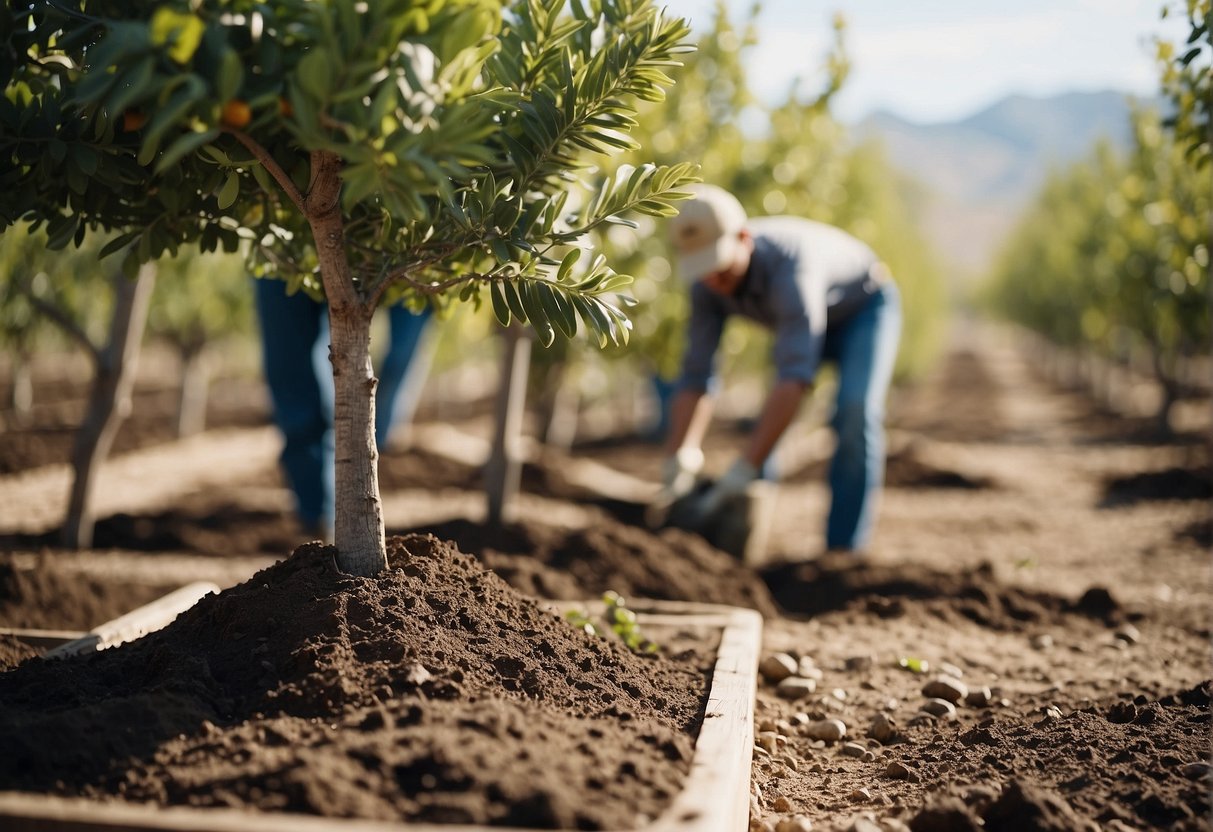
Proper Planting Techniques
When planting fruit trees in Wyoming, it is important to choose a location that receives full sun and has well-draining soil. The planting hole should be dug to a depth that is just slightly deeper than the root ball of the tree, and the width should be at least twice the diameter of the root ball. It is recommended to amend the soil with compost or other organic matter to improve soil quality and provide nutrients for the tree.
After planting, the tree should be staked to prevent it from leaning or falling over. It is important to not tie the tree too tightly to the stake, as this can damage the bark and restrict growth. A layer of mulch around the base of the tree can also help retain moisture and regulate soil temperature.
Ongoing Care and Disease Management
Proper ongoing care is essential for the health and longevity of fruit trees in Wyoming. Regular pruning is necessary to remove dead or diseased branches and promote healthy growth. Watering should be done deeply and infrequently, allowing the soil to dry out slightly between waterings. Fertilizing should be done in the spring and fall with a balanced fertilizer.
Fruit trees in Wyoming are susceptible to a number of diseases and pests, including root rot, fire blight, and apple maggot. It is important to monitor trees regularly for signs of disease or infestation and take appropriate action if necessary. This may include applying fungicides or insecticides, removing infected branches, or even removing the entire tree if the disease is severe.
Proper maintenance and care of fruit trees in Wyoming can also help ensure successful pollination and fruit production. Planting multiple varieties of fruit trees can help ensure cross-pollination, and the use of pollinator-attracting plants can also be beneficial.
Challenges and Solutions for Wyoming Orchards
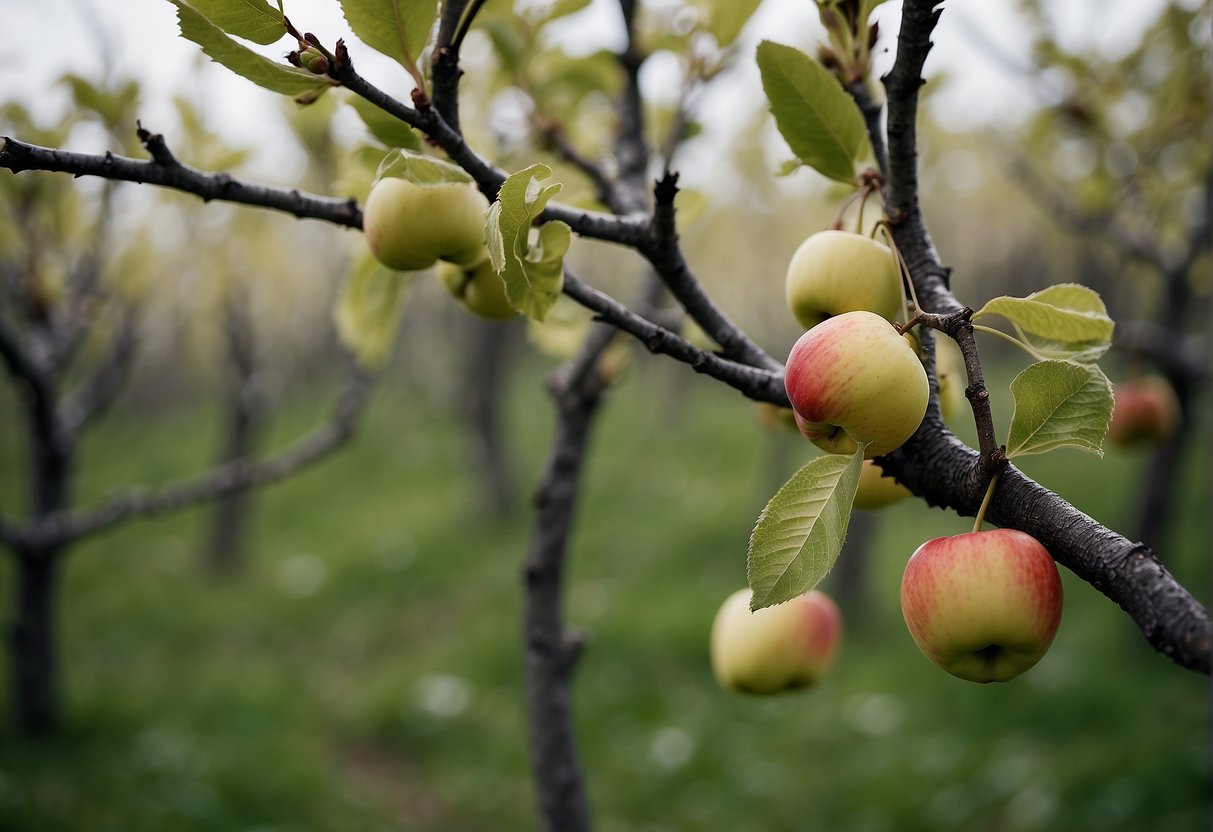
Dealing with Extreme Weather
Wyoming’s climate presents unique challenges for fruit tree growers. Drought, snow, frostbite, and cold temperatures are common occurrences in Wyoming winters, which can damage or kill fruit trees. To combat these challenges, growers need to select hardy fruit tree varieties that can withstand Wyoming’s harsh climate.
One solution is to plant fruit trees on south-facing slopes with good drainage to help protect them from cold temperatures and frost. Additionally, growers can use frost blankets and windbreaks to protect their trees from the cold.
Pest Control and Disease Prevention
Insects and diseases can also pose a significant threat to fruit trees in Wyoming. Some common pests include aphids, mites, and scale insects, which can damage fruit and leaves. To prevent insect infestations, growers can use insecticidal soaps and oils or biological controls like ladybugs and lacewings.
Diseases like fire blight and powdery mildew can also damage fruit trees. To prevent disease, growers can use fungicides and practice good sanitation by removing infected plant material. Additionally, selecting disease-resistant fruit tree varieties can help prevent disease outbreaks.
Overall, with proper planning and care, fruit trees can thrive in Wyoming’s challenging climate. By selecting hardy varieties, using protective measures, and practicing good pest and disease control, growers can successfully produce fruit in Wyoming’s unique environment.

